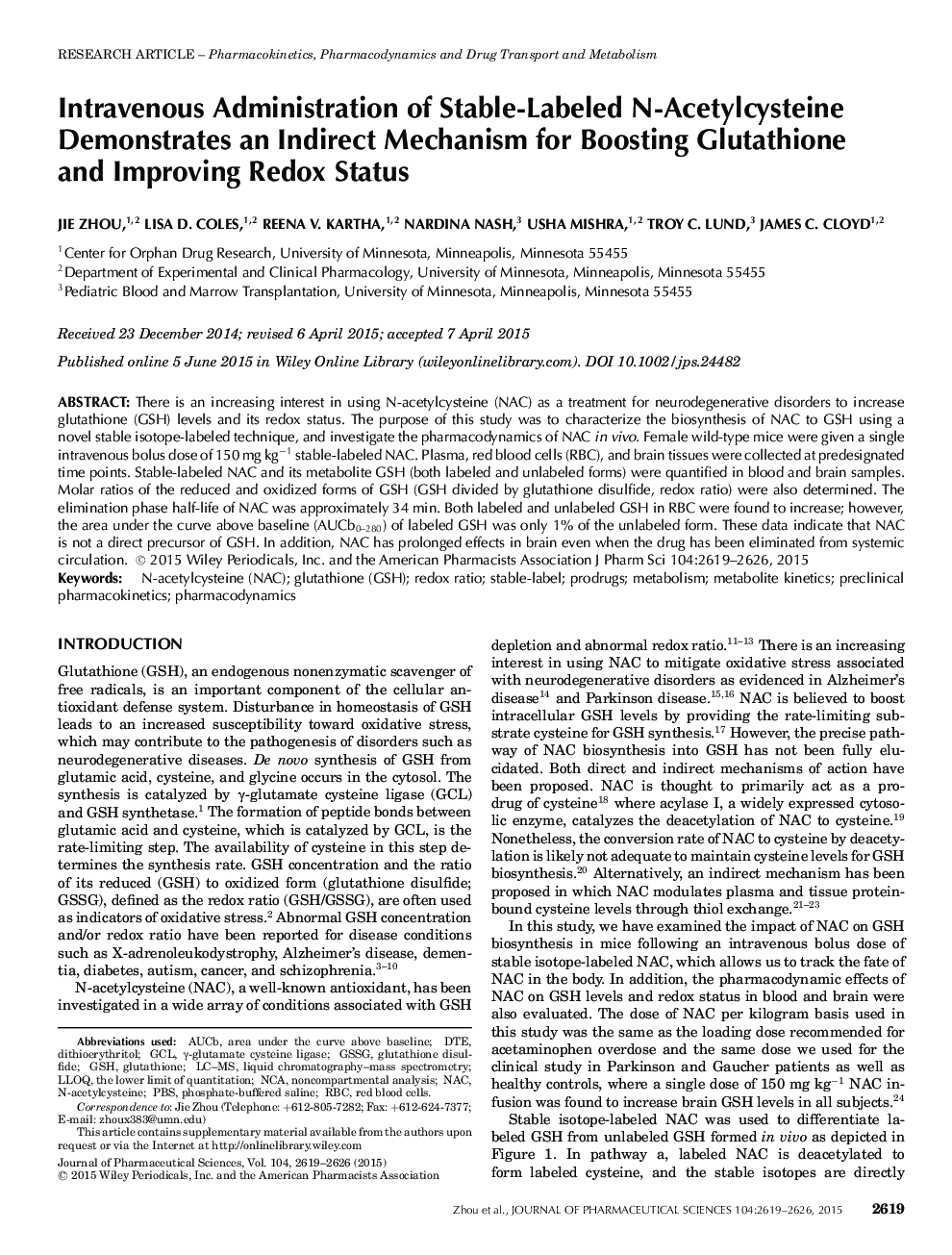| Article ID | Journal | Published Year | Pages | File Type |
|---|---|---|---|---|
| 10162031 | Journal of Pharmaceutical Sciences | 2015 | 8 Pages |
Abstract
There is an increasing interest in using N-acetylcysteine (NAC) as a treatment for neurodegenerative disorders to increase glutathione (GSH) levels and its redox status. The purpose of this study was to characterize the biosynthesis of NAC to GSH using a novel stable isotope-labeled technique, and investigate the pharmacodynamics of NAC in vivo. Female wild-type mice were given a single intravenous bolus dose of 150Â mg kgâ1 stable-labeled NAC. Plasma, red blood cells (RBC), and brain tissues were collected at predesignated time points. Stable-labeled NAC and its metabolite GSH (both labeled and unlabeled forms) were quantified in blood and brain samples. Molar ratios of the reduced and oxidized forms of GSH (GSH divided by glutathione disulfide, redox ratio) were also determined. The elimination phase half-life of NAC was approximately 34Â min. Both labeled and unlabeled GSH in RBC were found to increase; however, the area under the curve above baseline (AUCb0-280) of labeled GSH was only 1% of the unlabeled form. These data indicate that NAC is not a direct precursor of GSH. In addition, NAC has prolonged effects in brain even when the drug has been eliminated from systemic circulation. © 2015 Wiley Periodicals, Inc. and the American Pharmacists Association J Pharm Sci 104:2619-2626, 2015
Keywords
Related Topics
Health Sciences
Pharmacology, Toxicology and Pharmaceutical Science
Drug Discovery
Authors
Jie Zhou, Lisa D. Coles, Reena V. Kartha, Nardina Nash, Usha Mishra, Troy C. Lund, James C. Cloyd,
